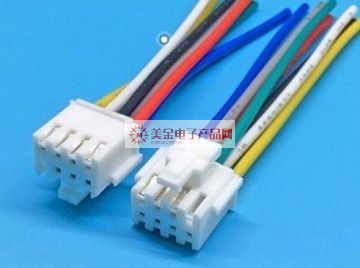Categorization:Product Information
Wire harness terminals are an important part of a wire harness and are used to connect the harness to other equipment or systems. They provide reliable electrical connections and mechanical fastening to ensure the quality and reliability of electrical signal transmission. Here are some common harness terminal configurations and what they do: Pin/Socket Terminals: Pins and sockets are the most common types of harness terminals. Pins are usually secured to one end of a wire harness, while sockets are installed on another device or system. Pins and sockets are connected to each other by insertion and withdrawal. They provide a reliable electrical connection with easy installation and removal features. Screw Terminals: Screw terminals use a screw structure to provide the connection. They usually consist of a threaded pin and a threaded socket. The electrical connection is formed by rotating the pin to secure it to the socket. Screw terminals offer excellent vibration resistance and a reliable connection. Solder Terminals: Solder terminals make a connection by soldering the wires in a wire harness to a connection point on a device or system. This type of connection provides a very strong electrical connection for applications that require high connection reliability. Crimp Terminals: Crimp terminals use pressure to connect the wires in the wire harness to the socket terminals. The spring pressure between the pins and the socket ensures a reliable electrical connection. Crimp terminals are characterized by easy installation and maintenance. Spring Contact Terminals: Spring contact terminals use a spring structure to provide an electrical connection. The pins are brought into contact with the sockets by the force of the spring, thus forming a reliable electrical connection. This terminal structure has good vibration resistance and low contact impedance, suitable for high frequency signal transmission. Crimp Terminals: Crimp terminals use a pair of clips to clamp the wires in a wire harness to make an electrical connection. They apply pressure by turning a screw or pressing a button. Crimp terminals are characterized by quick connection and disconnection, making them suitable for applications that require frequent connection and disconnection. The main functions of wire harness terminals include: Electrical connection: wire harness terminals provide a reliable electrical connection between the wire harness and other equipment or systems. They ensure that current and signals can be transmitted efficiently, thus ensuring the normal operation of the system. Mechanical fixation: Harness terminals ensure that the wire harness remains in a stable position during vibration and motion by securing the mechanical structure between the wire harness and the connecting equipment. This helps prevent damage and breakage of the wire harness and maintains system stability. Management and Protection: Harness terminals can also be used to manage wire harnesses, including organizing and protecting them from damage and short circuits. They can provide auxiliary components such as protective sleeves, retaining clips and insulating sleeves for wire harnesses. Quick Connect and Disconnect: Some harness terminal configurations are designed for quick connection and disconnection to facilitate repair and replacement of wire harnesses. This is useful for applications that require frequent replacement. Identification and Assignment: Harness terminals are often labeled to distinguish between different wires and signals. This helps to properly connect the harness and simplifies the maintenance and troubleshooting process. In summary, wire harness terminals play a vital role in the design and installation of wire harnesses. They provide reliable electrical connections and mechanical fastening to ensure the quality and reliability of electrical signal transmission, while providing easy installation, maintenance and troubleshooting. Different wire harness terminal structures are suitable for different application scenarios and requirements, and designers should choose the appropriate wire harness terminals according to specific needs.

-About US dollars electronic products network platform related to the introduction and sales of products brief: US dollars electronic products network - a professional agent / production / sales of a variety of {connectors | wiring harness | wire and cable products }; if you have a related [connectors | wiring harness | wire and cable products] purchasing / sourcing needs or would like to buy / to understand which connectors | wiring harness | wire and cable products we can provide solutions, please contact the following Division I business personnel; If you have a related [connectors | wiring harness | wire and cable products] sales / resources and promotion needs, please click "→ Business Cooperation ←" to discuss with a person! If you have related [connectors | wire harness | wire and cable products] sales / resources and promotion needs, please click on the "¡¡ Business Cooperation ←" to discuss with a person!